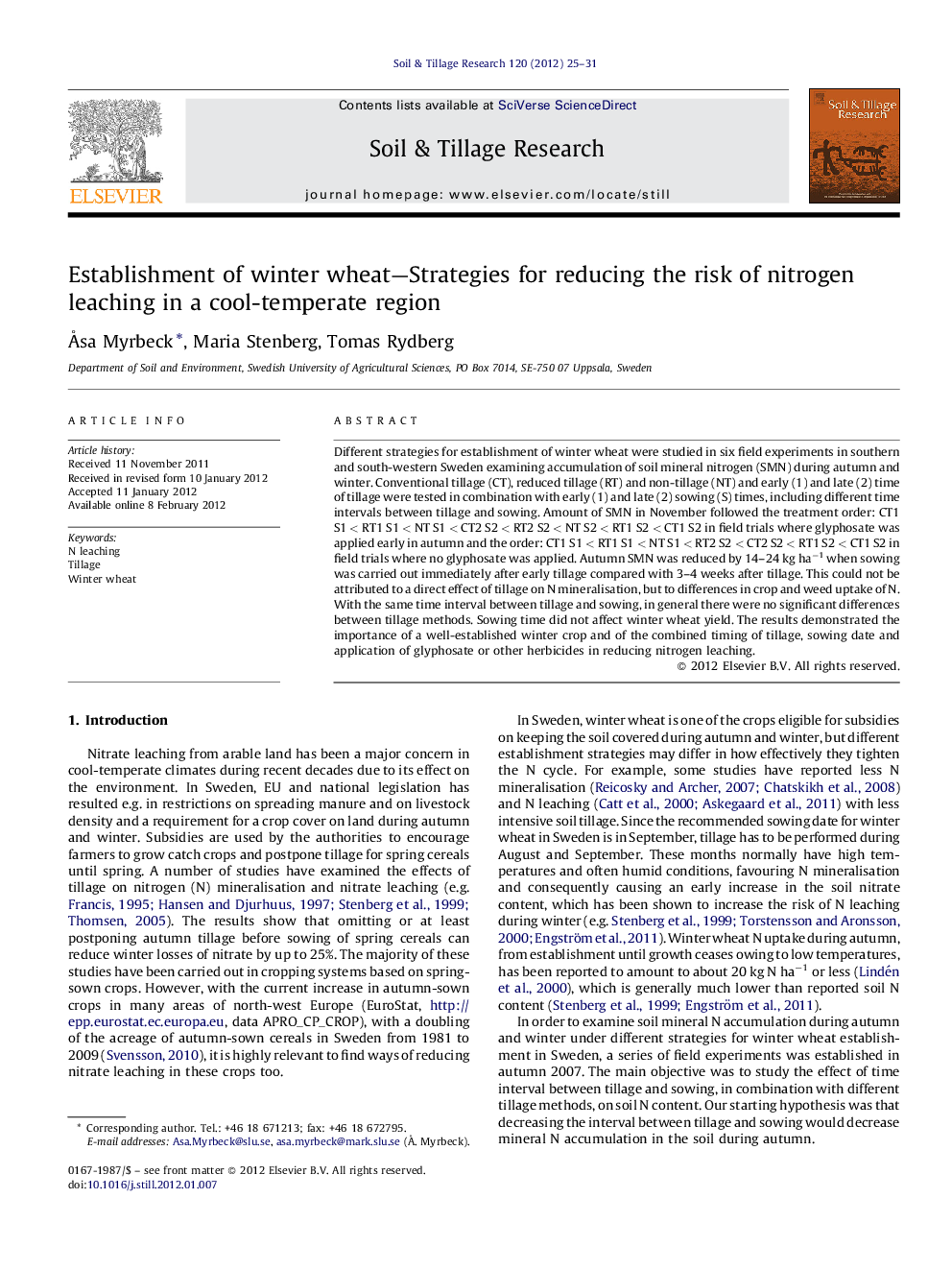| Article ID | Journal | Published Year | Pages | File Type |
|---|---|---|---|---|
| 305994 | Soil and Tillage Research | 2012 | 7 Pages |
Different strategies for establishment of winter wheat were studied in six field experiments in southern and south-western Sweden examining accumulation of soil mineral nitrogen (SMN) during autumn and winter. Conventional tillage (CT), reduced tillage (RT) and non-tillage (NT) and early (1) and late (2) time of tillage were tested in combination with early (1) and late (2) sowing (S) times, including different time intervals between tillage and sowing. Amount of SMN in November followed the treatment order: CT1 S1 < RT1 S1 < NT S1 < CT2 S2 < RT2 S2 < NT S2 < RT1 S2 < CT1 S2 in field trials where glyphosate was applied early in autumn and the order: CT1 S1 < RT1 S1 < NT S1 < RT2 S2 < CT2 S2 < RT1 S2 < CT1 S2 in field trials where no glyphosate was applied. Autumn SMN was reduced by 14–24 kg ha−1 when sowing was carried out immediately after early tillage compared with 3–4 weeks after tillage. This could not be attributed to a direct effect of tillage on N mineralisation, but to differences in crop and weed uptake of N. With the same time interval between tillage and sowing, in general there were no significant differences between tillage methods. Sowing time did not affect winter wheat yield. The results demonstrated the importance of a well-established winter crop and of the combined timing of tillage, sowing date and application of glyphosate or other herbicides in reducing nitrogen leaching.
► Strategies for reducing the risk of N leaching in winter wheat were tested. ► Higher N uptake with early sowing keep leachable soil N low compared with late sowing. ► Short time interval between tillage and sowing is more important than tillage method. ► The use of glyphosate counteracts benefits from delayed autumn tillage.
